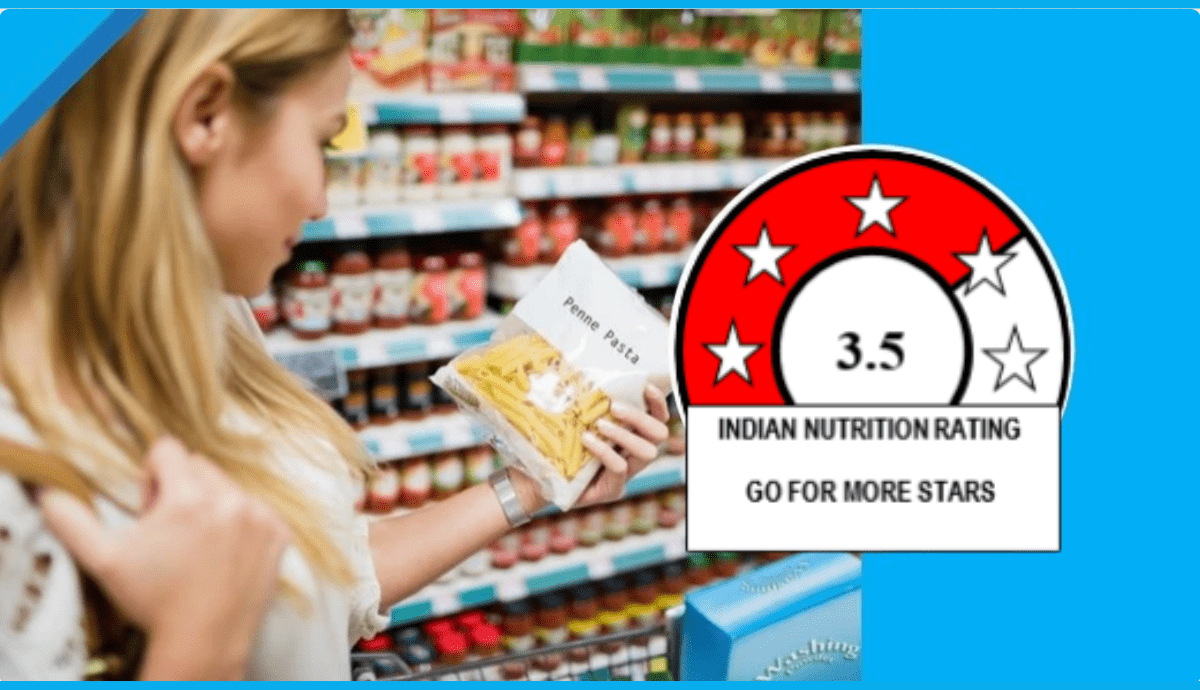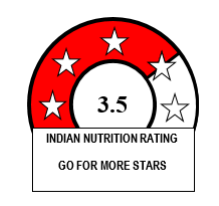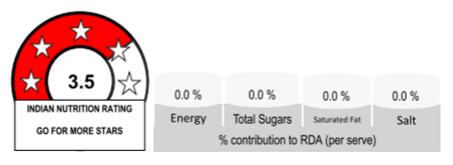FSSAI Front of Pack Labelling in India
October 1, 2022

Non-communicable diseases (NCDs) like obesity, diabetes, and hypertension are on a rapid rise in India. This statement is supplemented by a report called “India: Health of the Nation’s States” by the Ministry of Health and Family Welfare (MOHFW), Government of India (GOI). The report highlights that proportion of deaths due to NCDs (among all deaths) has increased from 37% in 1990 to 61% in 2016 (1). Studies show that NCDs contribute to more than half (60%) of all deaths in India (2). Unhealthy diets (diets low in fruit, vegetables, and whole grains, but high in salt and fat) are one of the biggest contributing factors to lifestyle-related disorders like NCDs (1). While processed food may have benefits like convenience, availability and better food safety, it must be noted that processed food products tend to contain high amounts of nutrients related to obesity and NCDs- sodium, sugar, saturated fat and trans fat. If not regulated, their increased consumption can wreak havoc on the population’s health.
One approach used to help prevent and control further widespread lifestyle related disorders is Front-of–pack labelling (FOPL). Many governments have made use of public health policies where FOPL has become a voluntary or mandatory part of the labelling of processed food products.
What is Front-of–pack labelling (FOPL)?
FOPL is one of the essential policy tools to regulate processed food products to prevent them from unbalancing diets. It helps to indicate to consumers which products contain excessive amounts of sugars, total fats, saturated fats, trans fats, and sodium.
There are various FOPL models using different approaches. Following are the various types-
Colour-coded FOPL models like Multiple Traffic Lights (MTL)
Warning labels like Black octagon labels (Stop signals)
Scale-based graded labels like Nutri-score, Health Star Rating (HSR)
Endorsement symbols like Choice Logo, Green Keyhole
Countries like the UK, France, Australia, and Chile have implemented various FOPL models. For ex- Health Star Rating in Australia and New Zealand, Healthier Choice Symbol in Singapore, Stop signals (Black octagon) in Chile, Multiple Traffic Lights in the UK, and so on.
Following suit, FSSAI has also released a draft on FOPL called Food Safety and Standards (Labelling & Display) Amendment Regulations, 2022. The draft proposes Indian Nutrition Rating (INR) as the choice of FOPL for processed foods in India. This is a big step in the direction of consumer awareness.
Benefits of Front-of–pack labelling (FOPL)-
The purpose of having FOPL is to present simplified nutrition information on the front-of-pack of pre-packaged foods. In today’s fast-paced world, consumers find it difficult to find the time to flip the pack and read the back of packs. In addition to lack of time, many also find food labels difficult to understand. The introduction of FOPL will provide nutritional information to consumers in an easy-to-absorb form like symbols/graphics/text or a combination thereof.
Not only will FOPL inculcate healthier choices among consumers, but it will also encourage food manufacturers to formulate healthier food products for the masses.
Front-of–pack labelling (FOPL) in India-
In India, the Indian Nutritional Rating (INR) system is introduced as the choice of FOPL by FSSAI, proposed in a draft released on 20/Sept/2022. The rating system is similar to the one that is currently used by the Bureau of Energy Efficiency for assessing the energy efficiency of electrical devices. INR FOPL will enable consumers to make better choices as the regulator clearly states more stars indicate a better food product. It is a guidance system for consumers which makes it easier for them to make healthier decisions without flipping the pack.
What is Indian Nutritional Rating (INR) INR?
Indian Nutritional Rating (INR) INR is a star rating FOPL model which rates the overall nutritional profile for packaged food by assigning it a rating from ½ star (least healthy) to 5 stars (most beneficial). More stars indicate that the food product is better positioned to provide for the daily human need for nutrients.
All processed and packaged food products are classified into three categories-
CATEGORY-I (Solid foods)
CATEGORY-II (Liquid foods)
CATEGORY-III (Exempted from FOPNL)
Any beverage/carbonated beverage without energy and/or sugar shall not be eligible for declaring Star Rating (INR).
Calculation of INR score and star rating is dependent on–
Baseline points –
They are calculated using 4 health risk-increasing factors energy, total sugars, saturated fat, and sodium for solid foods per 100g product, and using energy and total sugars for liquid foods per 100ml product.
FVNLM points-
They are calculated using a percentage of fruits, vegetables, nuts, legumes, and millet. For Liquid foods, only FV points are to be considered and not NLM points.
Protein and fibre points-
Which are calculated using protein and fibre amounts. For liquid foods, only protein points are to be considered and not fibre points.
The formula used to calculate INR scores is –

From the INR score, the correlated INR stars can be generated.
The placement of the INR star logo (as shown below) must be displayed in close proximity to the product's name or brand name on the front of the pack.

Food business operators may optionally add additional interpretive information as per serving % contribution to RDA of energy, total sugars, saturated fats and sodium expressed as salt equivalent, along with the INR logo as illustrated below-

The draft proposes that compliance shall be voluntary until a period of 48 months from the date of final notification of these regulations and mandatory thereafter.
This is a significant step towards consumer awareness. INR FOPL will make it easy for consumers to compare various packaged food products of the same category. Additionally, it will initiate a conversation in the consumer community resulting in aware and conscious consumers. Empowering consumers with transparent labels is a huge step in our fight against NCDs.
REFERENCES-
https://www.nhp.gov.in/healthlyliving/ncd2019 - accessed on 23/Sept/2022.
Nethan S, Sinha D, Mehrotra R. Non Communicable Disease Risk Factors and their Trends in India. Asian Pac J Cancer Prev. 2017 Jul 27;18(7):2005-2010. doi: 10.22034/APJCP.2017.18.7.2005. PMID: 28749643; PMCID: PMC5648412.
https://fssai.gov.in/upload/uploadfiles/files/Draft_Notification_HFSS_20_09_2022.pdf - Food Safety and Standards (Labelling & Display) Amendment Regulations, 2022.

Sonika Sharma (MSc Food & Nutrition)
Sonika has worked with FMCGs as a market nutritionist for over 4 years. Apart from her interest in everything food and nutrition, she also enjoys reading and travelling.
